Antarctica is just the tip of the iceberg
Whether you want to embrace the wilds of Southern Patagonia or unwind at a vineyard near Santiago, talk to Swoop about extending your adventure...

Price Match Promise-We’ll match any price you find elsewhere for the same trip
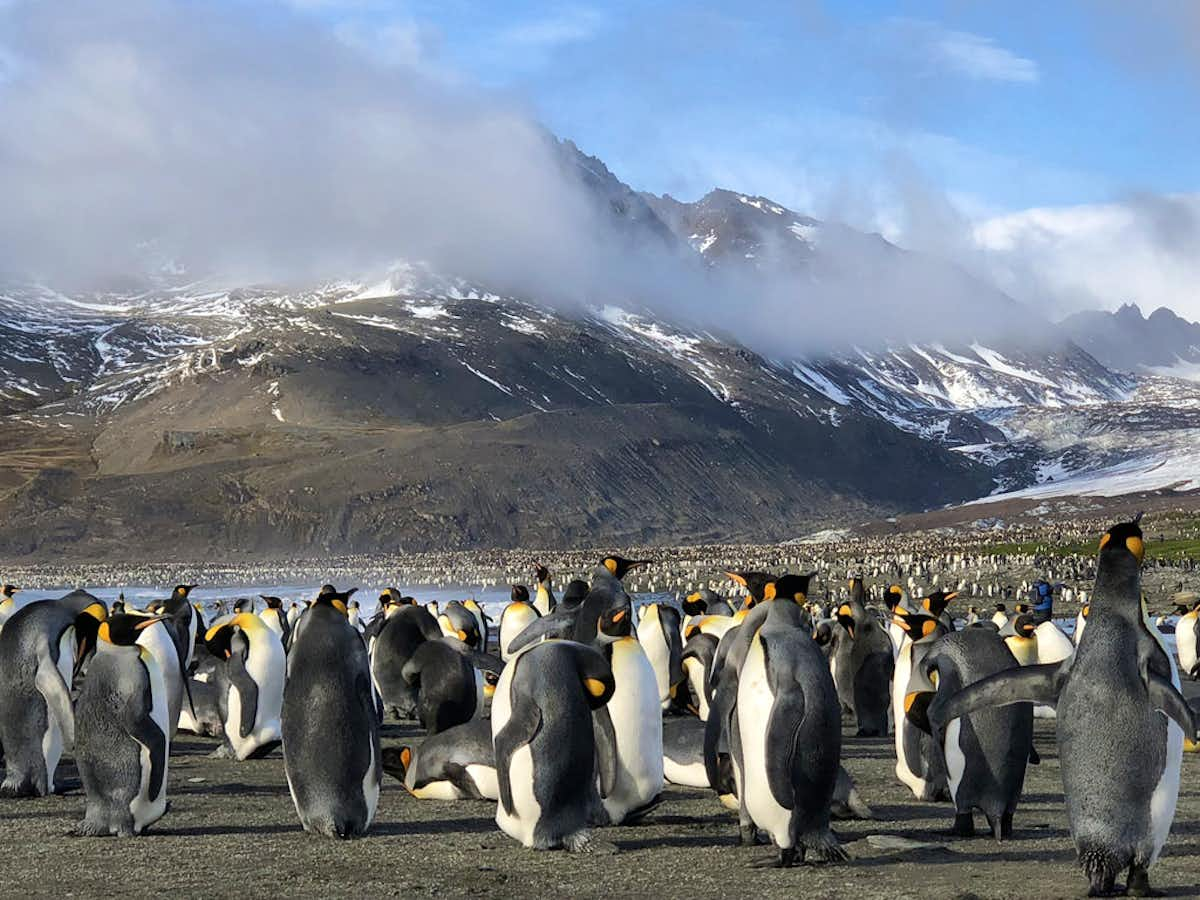

Chinstrap penguins on ice

Your vessel amidst pristine Antarctic snow
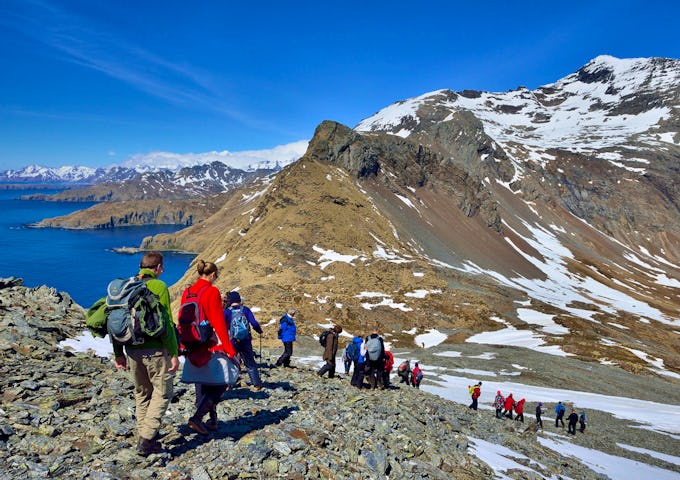
Trekking the mountains of Gothul © Martin van Lokven

Visiting Shackleton's grave at Grytviken, South Georgia
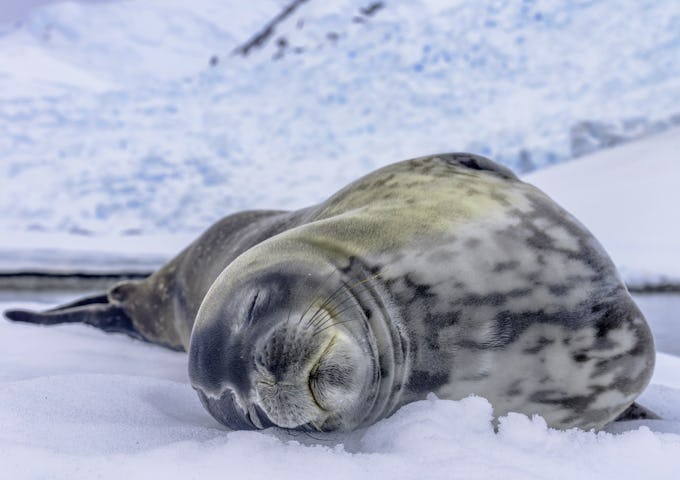
Weddell seal rests on the ice
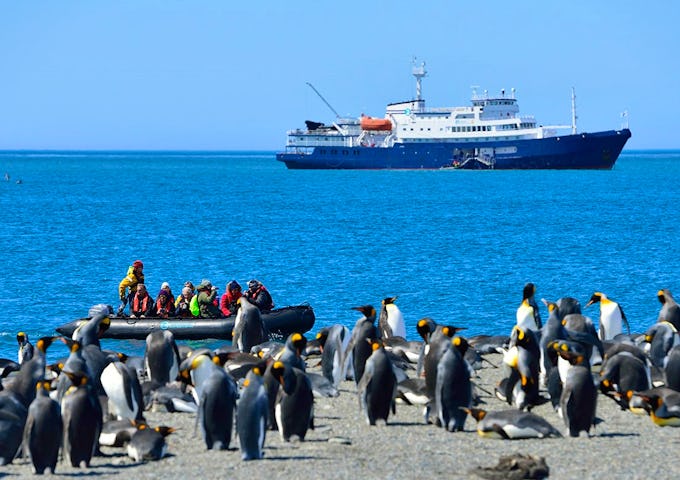
St Andrews Bay © Martin van Lokven
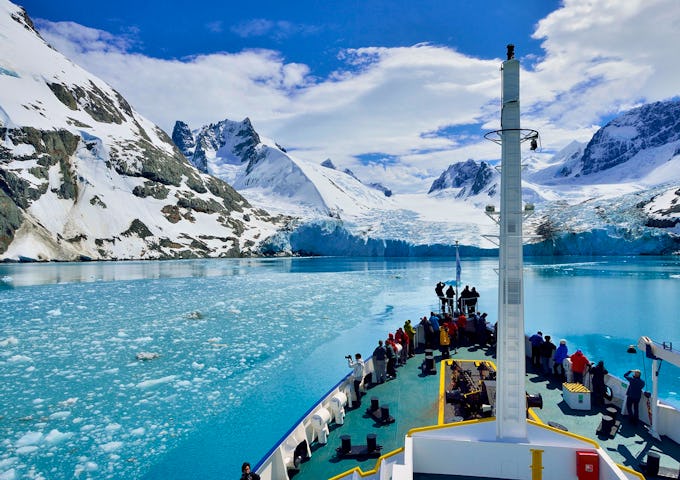
South Georgia Galskifjord
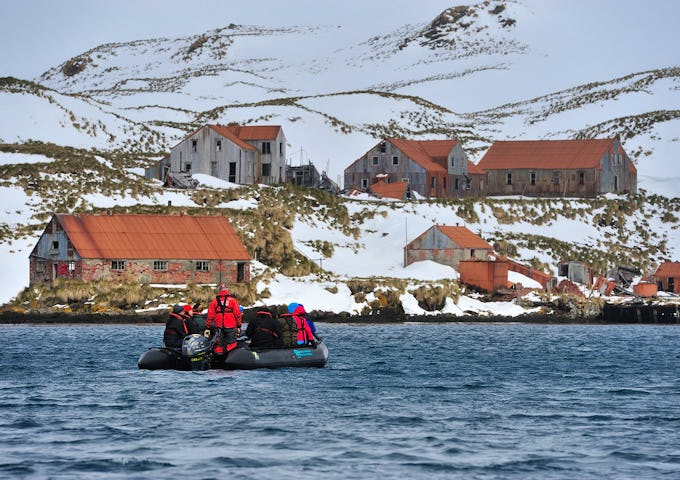
Prince Olav Harbour © Martin van Lokven
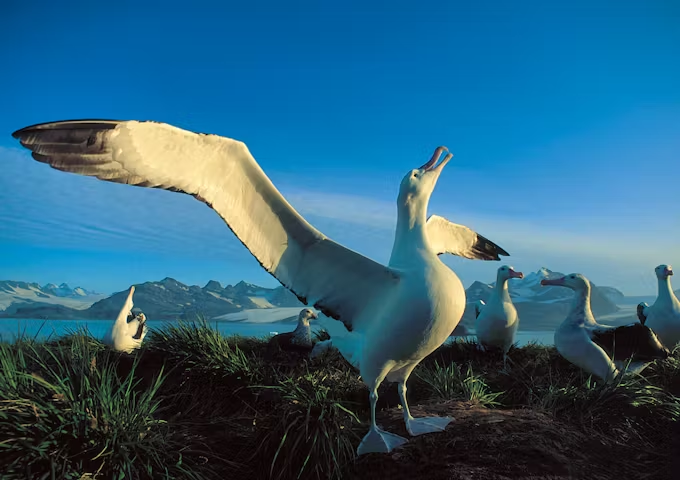
Wandering albatross © Rinie van Meurs
Falklands, South Georgia & Antarctic Adventure trips scored 4.6/5 from 77 reviews
10/10 - This trip was WAY more than I expected. The wildlife and scenery were beyond imagination. The captain on our ship went out of his way to make sure we experienced the wildlife or scenery we saw along the way. Our schedules were adapted to ensure we saw and experienced what we encountered. The guides were all extremely educated and knowledgeable in the areas we visited.
Travelled: February 2025
Michele Krantz - USA
10/10 - Great ship, super site excursions, LOTS to see and do!! It was a very moving trip, very informative and special.
Travelled: February 2025
Paul Lawrence Dreyer - USA
10/10 - I think we got really lucky with the weather. We were able to do so many landings/zodiac cruises and dives (I did a dozen + a polar plunge). Diving with a lots of sea lions, seals, and ctenophores around me. Seeing a colony of 100,000s of king penguins. Whales literally swimming right next to/under our zodiacs.
Travelled: February 2025
Matthew-Dean Argame - USA
10/10 - Extraordinary landscapes, wildlife, expeditions, activities. Excellent expedition team. Ship perfect.
Travelled: February 2025
Ian Stewart - UK
10/10 - The entire trip was excellently conducted and managed with many zodiac cruises and landings. The wildlife viewing was outstanding including: penguins, seals, birds, and whales. Pippa Low and her staff were professional and charming offering us experiences we will never forget.
Travelled: February 2025
William Atkins - USA
10/10 - The trip blew me away from start to finish and just kept getting better. We had a fantastic expedition team and a fantastic leader in Pippa. Her and her team were very enthusiastic about every thing they did and also very knowledgeable. The lectures were all first class.
Travelled: February 2025
David Conway - UK
10/10 - The ship & expedition operator, regard their itineraries as expeditions, not cruises. More active than passive. All seemed to progress smoothly, flexibly & to a timetable created around the opportunities, suitably altered due weather. This can only come from excellent coordination and teamwork which was particularly evident between the Captain & Expedition Leader. Decisions were clearly explained, activities & safety thoroughly briefed, interesting lectures well presented & a close ship’s spirit successfully crafted from day one.
Travelled: January 2025
Lars Smith - UK
10/10 - It gave me everything I wanted out of the trip. The ship and crew were great, plenty of expedition activities, good lectures and wonderful wildlife sightings.
Travelled: January 2025
Graham Meech - USA
10/10 - Every aspect of the adventure was beyond my expectations. From the ship, the crew, the wildlife, the gorgeous ice, and finally the people/passengers.
Travelled: January 2025
Amy M Mundt - USA
10/10 - The organization, the courteous crew and staff, friendliness, were the best of all of my cruises!
Travelled: January 2025
David Sr Pettengill - USA
10/10 - Everything was perfect - the excursions, the guides, the ship - each place was different and we saw every animal on our checklist.
Travelled: January 2025
Robin Schelstraete - USA
10/10 - Best vacation ever. Extremely friendly, knowledgeable and helpful. The team were as excited as the passengers at every turn. Supportive and encouraging team.
Travelled: January 2025
Devon E Delk - USA
10/10 - Love the diverse wildlife and scenery! Great lectures. Highly entertaining and knowledgeable!
Travelled: December 2024
Xiaoteng Huang - USA
10/10 - Aside from the truly breathtaking scenery and nature, there was so much diversity on this trip - landscape and wildlife, obviously, but also history (Grytviken whaling station, following Shackleton's amazing journey) and culture (Stanley on the Falklands was a surprise hit - what a fantastic community!).
Travelled: December 2024
Drew Wilson - USA
10/10 - Ship and crew great, with an open bridge run by the captain. Amazing end of the earth landscapes and experiences. Expedition leader (Pippa) and expedition staff/experts all great, and very varied in their knowledge fields.
Travelled: December 2024
David Slater - Australia
10/10 - It ticked off so many of the "boxes" - and more! - of what we wanted to see and do for an Antarctic trip. The fact that it did include the Falklands and South Georgia was also a bonus. We loved the Shackleton association, especially in that the expedition team and ship's captain were able to get us into places unexpected.
Travelled: December 2024
Karen Downing - United States Minor Outlying Islands
10/10 - Every stop, every zodiac ride or landing yielded unbelievable beauty and wildlife. If the team ever resorted to a plan ‘B’, it was so seamless that nobody noticed.
Travelled: December 2024
Mark Downing - United States Minor Outlying Islands
Most memorable moment? The penguins of South Georgia.
Travelled: December 2024
Dan Salter - UK
10/10 - The expedition team were terrific. We were very lucky with the weather and managed almost all our planned landings with superb zodiac cruises replacing the couple that were not possible.
Travelled: December 2024
Karen Pryor - UK
10/10 - Small ship, outstanding expedition team, cabin perfectly adequate, catering and bar team great, outstanding scenery and wildlife. We got 18 out of the 20 trips as planned, with one landing changed to a zodiac trip due to some wildlife illness, and one venue changed due to sea ice.
Travelled: December 2024
Malcolm Pryor - UK
10/10 - We saw exceptional beauty and amazing wildlife we had never encountered before. The expedition staff was outstanding.
Travelled: February 2024
Jeffrey Siegel - USA
All members of the expedition team were extremely knowledgeable and shared with us without reservation.
Travelled: January 2024
Bernard Parker - USA
10/10 - Sheer amount of wildlife and beauty, final frontier destination, nothing like it anywhere else.
Travelled: January 2024
Steve Murphy - USA
10/10 - It gave us a complete look at this magnificent part of the world. The expedition staff was knowledgeable and energetic. We saw amazing things.
Travelled: January 2024
Gerry Good - USA
10/10 - It was beautiful. Every wildlife moment was precious.
Travelled: January 2024
Parvathi Nackeeran - USA
10/10 - All the stops were worth seeing. Guides & crew treated us like a family.
Travelled: December 2023
Diane Alton - Canada
10/10 - I can only add that going to Antarctica via all the stops/islands and slowly entering into the White Continent and icebergs was a great way to do it. Plus the additional wildlife this route offered was mind-blowing.
Travelled: December 2023
Meike Kyung Ok Van Der Veur - Belgium
10/10 - The whole trip was great. The crew really tried to accommodate for all scenarios and sneaked in some surprise visits to unplanned areas, which was really appreciated. Also, they took great care in making sure everyone was safe and enjoyed their landings or cruisings.
Travelled: December 2023
Mary Abraham - USA
10/10 - Every single day was something amazing to see and/or learn about.
Travelled: December 2023
Deb Smith - USA
We were at South Georgia Island on Christmas Day. The expedition team were skilled at getting my friends and I into the zodiac and touring us along the shoreline to see macaroni penguins, fur seals, gentoo penguins, elephant seals and Weddell seals up close and personal. It was certainly a Christmas I will never forget.
Travelled: December 2023
Diane Douglas - USA
There were so many memorable moments! If I had to choose, it would be our days in Antarctica, the hike to the caldera on Penguin Island, our first landing on the continent, the hikes to the top of hills for magnificent views, the zodiac cruises to see wildlife and icebergs. Getting to see the wildlife in their natural habitat was nothing short of amazing!
Travelled: December 2023
Deb Smith - USA
The islands, the wildlife were beyond my expectations as were the staff, fellow travelers and lectures. What was not great was all the time on the boat. However, I'm not sure how to get around that! South Georgia in particular was a rare treat.
Travelled: November 2023
Rosemary Broome - USA
There were so many memorable moments. Seeing a pod of Killer Whales, setting foot on the 7th continent, the elephant seal pups looking up with those adorable eyes, the king penguin chicks running and flapping around trying to shake off their down coats. What a trip!
Travelled: November 2023
Neil Gibson - Australia
10/10 - Absolutely beautiful. Great professional staff and planning, especially from Pippa, Expedition Team Leader.
Travelled: January 2023
Evelyn Martinez - USA
Most memorable moment? Being able to stand in front of the colony of king penguins.
Travelled: January 2023
Carolina Dupree - USA
South Georgia Island is absolutely a must see if you are traveling that far. I know it is more expensive, but it makes the trip amazing.
Travelled: January 2023
Steven Goodman - USA
10/10 - Incredible wildlife and the staff did their best despite several weather issues to get us on shore. Itinerary is very weather dependent.
Travelled: January 2023
Steven Goodman - USA
10/10 - Combines great parts of the Antarctic area. History, culture, wildlife, geology were fascinating.
Travelled: December 2022
John Metcalfe - USA
We would particularly recommend adding in the Falklands and South Georgia. The Falklands was such a lovely surprise and on top of Stanley and the history there the wildlife was amazing and as good as anything else we saw the whole trip. South Georgia lived up to its reputation for the greatest wildlife, plus its dramatic landscape and history. If you can then it is definitely the best itinerary to follow.
Travelled: December 2022
Angus Townsend - UK
So hard to pick our most memorable moment between that first thrill of wildlife at West Point with the albatross and rockhopper colony, the full day sitting amongst and soaking in all the wildlife at sunny Saunders Bay, or the Adelie penguin overload at Paulet island. Or maybe the excitement at seeing an orca pop up out of nowhere on New Year's Eve. It really is a trip of endless memorable moments that would each be the highlight of any other holiday.
Travelled: December 2022
Angus Townsend - UK
I describe this adventure as going to the moon and back. Of course, a trip like this is very weather dependent - but our weather could not have been any more perfect! Our expedition leader, Sarah, was determined to get us off the ship as much as possible. We had 17 landings and 2 cancelled landings, of which one was substituted for a zodiac excursion so we didn't miss the penguin colony. So you ask what was my most memorable moment - every day, every longing, every guide, every lecture was memorable. This was an otherworldly experience.
Travelled: December 2022
Gerry Garber - USA
We can't say enough good things about the entire team; from the direct support staff to the onboard staff. They were all friendly, helpful, informed, and knowledgeable.
Travelled: November 2021
Paul Parris - USA
The buildup was perfect - first visiting the Falklands, Carcass and Saunders Islands, and then on to South Georgia made for great wildlife interaction. We certainly had enough time during the excursions to take great pictures. Weather is always an issue but on our trip we were fortunate to have reasonable good weather and could go on shore on most of our excursions.
Travelled: November 2019
Leon Steyl - South Africa
Whether you want to embrace the wilds of Southern Patagonia or unwind at a vineyard near Santiago, talk to Swoop about extending your adventure...

This website uses cookies to ensure you get the best experience on our website. Privacy policy
We don’t charge a commission and there are no hidden fees. Just impartial, expert advice from the leading Polar cruise agent. Schedule a call with our Antarctic Experts today.

